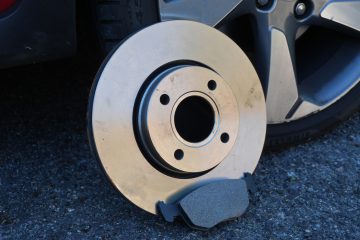A major government-funded research study has suggested particles from vehicle tyres could be a significant and previously largely unrecorded source of microplastics in the marine environment.
The study is one of the first worldwide to identify tyre particles as a major and additional source of microplastics. Scientists have previously discovered microplastics, originating from microbeads in cosmetics and the degradation of larger items such as carrier bags and plastic bottles, in marine environments globally – from the deep seas to the Arctic.
Following the government’s ban on rinse-off microbeads, which is one of the toughest in the world, the Defra-funded study led by the University of Plymouth now reveals vital new information that will improve our scientific understanding of how tiny particles from tyres, synthetic fibres from clothing and maritime gear also enter the ocean.
This project will be used to guide future research already underway on marine plastic pollution and the impact of human activities on the marine environment as the government continues in its fight against the scourge of plastics. This includes the 5p plastic bag charge – which has led to 15 billion fewer bags distributed – and plans to end the sale of plastic straws and stirrers and plastic-stemmed cotton buds later this year.
The study shows that tyre particles can be transported directly to the ocean through the atmosphere or carried by rainwater into rivers and sewers, where they can pass through the water treatment process. Researchers estimate this could place around 100million m² of the UK’s river network – and more than 50million m² of estuarine and coastal waters – at risk of contamination by tyre particles.
“Reducing plastic pollution in the ocean is one of the greatest environmental challenges that we face,” comments Domestic Marine Minister Rebecca Pow. “This study will help us face that challenge by identifying areas for future research, such as changes to roadside drainage and textile design.”
The study was directed by Professor Richard Thompson OBE, Head of the International Marine Litter Research Unit , and Plymouth researchers Dr Imogen Napper and Florence Parker-Jurd. It also involved Dr Geoff Abbott from the School of Natural and Environmental Sciences at Newcastle University, who developed a breakthrough method using mass spectrometry to detect tyre-derived microplastics in the environment, Dr Stephanie Wright from Kings College London, and Simon Hann from Eunomia Research & Consulting Ltd.
“Scientists have long suspected that tyre debris is posing a hidden threat to the marine environment,” added Thompson. “However, there have been few studies measuring abundance in aquatic environments. Now that we have a clearer indication on quantities we need to gain a better understanding on transport in the environment and the potential impacts on marine life.
“This study gives us a real insight into the importance of tyre wear as a source of microplastics. However there are still many unknowns, and compared with other forms of microplastics we know relatively little about tyre wear particles. So it is important to continue to take steps to reduce emissions of better understood sources like fibres from textiles and the fragmentation of larger items.”



